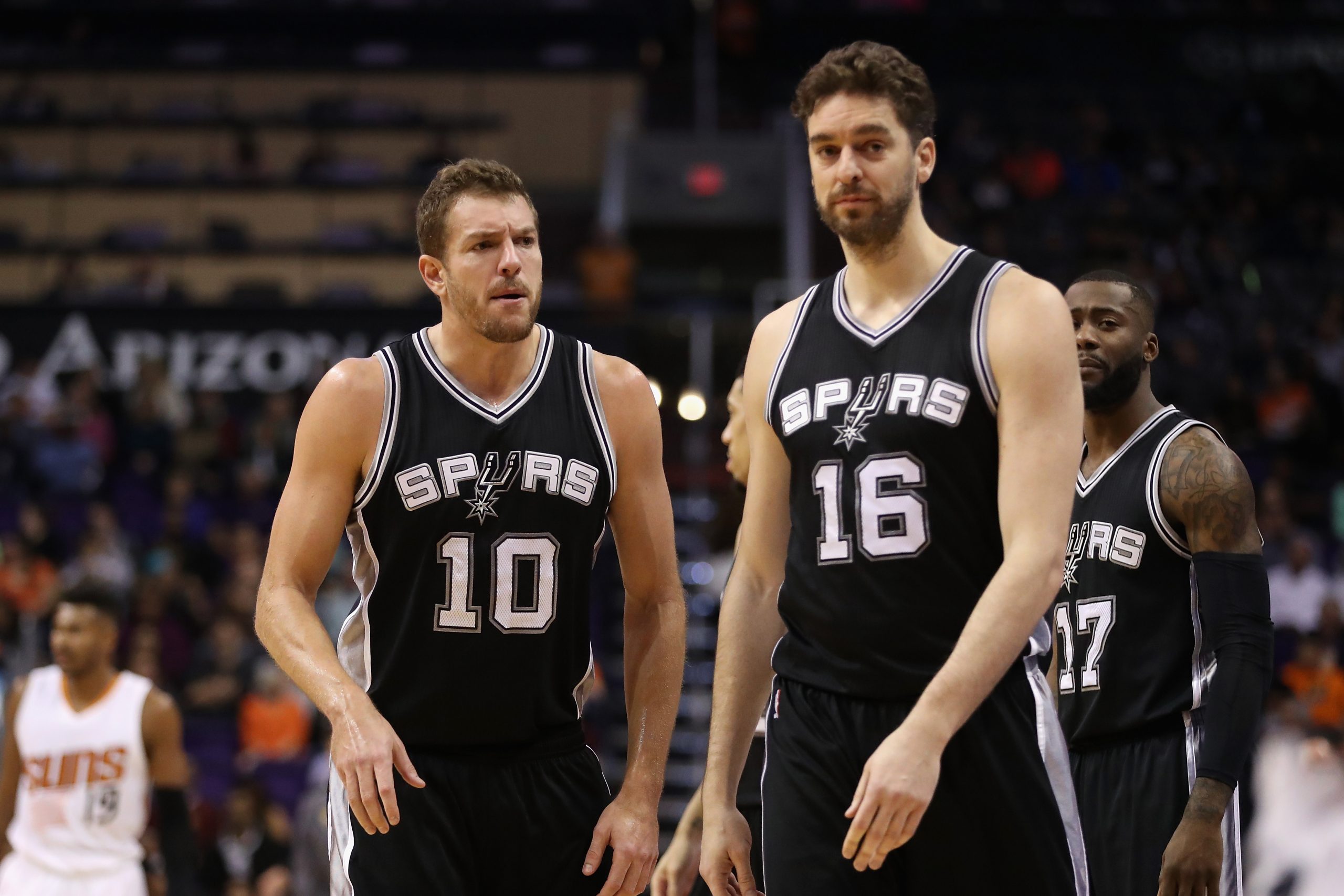The San Antonio Spurs are missing Pau Gasol. Before the Spurs’ January 19th matchup against the Denver Nuggets, Gasol and Kyle Anderson had an awkward collision in the layup line, resulting in a broken bone in Gasol’s left hand. In Gasol’s absence, the Spurs’ offense has taken a hit. In fact, from that game against the Nuggets to Wednesday night’s game against the Philadelphia 76ers, the Spurs have ranked 19th in the league in offensive rating, producing an offensive rating 5.4 points per 100 possessions worse than they produced from the beginning of the season until Gasol’s injury. While the largest hit to this number surely came in Monday night’s loss against the Memphis Grizzlies when Kawhi Leonard was also out, it is undeniable that the Spurs are missing a key piece of their offense in Gasol.
Before his injury, Gasol scored 22.3 points per 100 possessions, fourth on the Spurs and third among players that see regular minutes on the team. However, the way that he contributed to the offense goes deeper than simply scoring points. He created 5.2 assists per 100 possessions, more than any non-guard on the team while having the third best assist to turnover ratio on the team, behind only Tony Parker and Patty Mills.
The removal of Gasol’s scoring and passing has hurt the team’s overall efficiency as well. The Spurs had an effective field goal percentage of 53.8 before his injury, ranking third in the league overall. Since his injury, however, the Spurs have had an effective field goal percentage of 51.3, ranking eighteenth in the league over that span. Not only has the Spurs’ efficiency decreased, but their pace has increased. While they ranked twenty-seventh in the league in pace until Gasol’s injury, they have ranked twelfth since then. While this may seem harmless enough at first, increasing the pace while decreasing efficiency means that the Spurs are giving opponents more opportunities to score while scoring on less possessions themselves. This is a large part of the reason why many of the games since Gasol’s injury have seemed to be close games, despite the Spurs going 8-3 in that span.
When Gasol is on the court, he accounts for 20.1% of Spurs’ points. Dewayne Dedmon and David Lee, the players who have absorbed most of his playing time since his injury, account for only 14.1 and 17.4% of Spurs’s points while they are on the court respectively. While this may not seem like an incredibly large drop off, it makes a big difference in alleviating the scoring burden from Leonard and LaMarcus Aldridge. While Leonard and Aldridge are the Spurs’ main offensive threats, neither are completely immune from off nights, as every player can have. When the shot is not quite falling for one or both of them, it’s important for the Spurs to have players who can lift the Spurs offensively, whether that’s through scoring or creating scoring opportunities for others through assists.
While Gasol is in the latter years of his career, he still provides an important impact for the Spurs. It is hard to quantify lineup chemistry statistically, but it has always been an important aspect for the Spurs. When key members of the rotation miss extended periods of time, it usually shows on the court and statistically. However, the impact of some of these pre- and post-Gasol injury numbers help paint his importance to the Spurs on the offensive end. They also help provide some clarity to the Spurs’ recent struggles on that end of the court. With Gasol hoping to return to the court in the next few weeks, the Spurs will continue to look for ways to improve on both sides of the ball as the playoffs draw even closer.
All stats obtained from nba.com/stats.
Add The Sports Daily to your Google News Feed!
